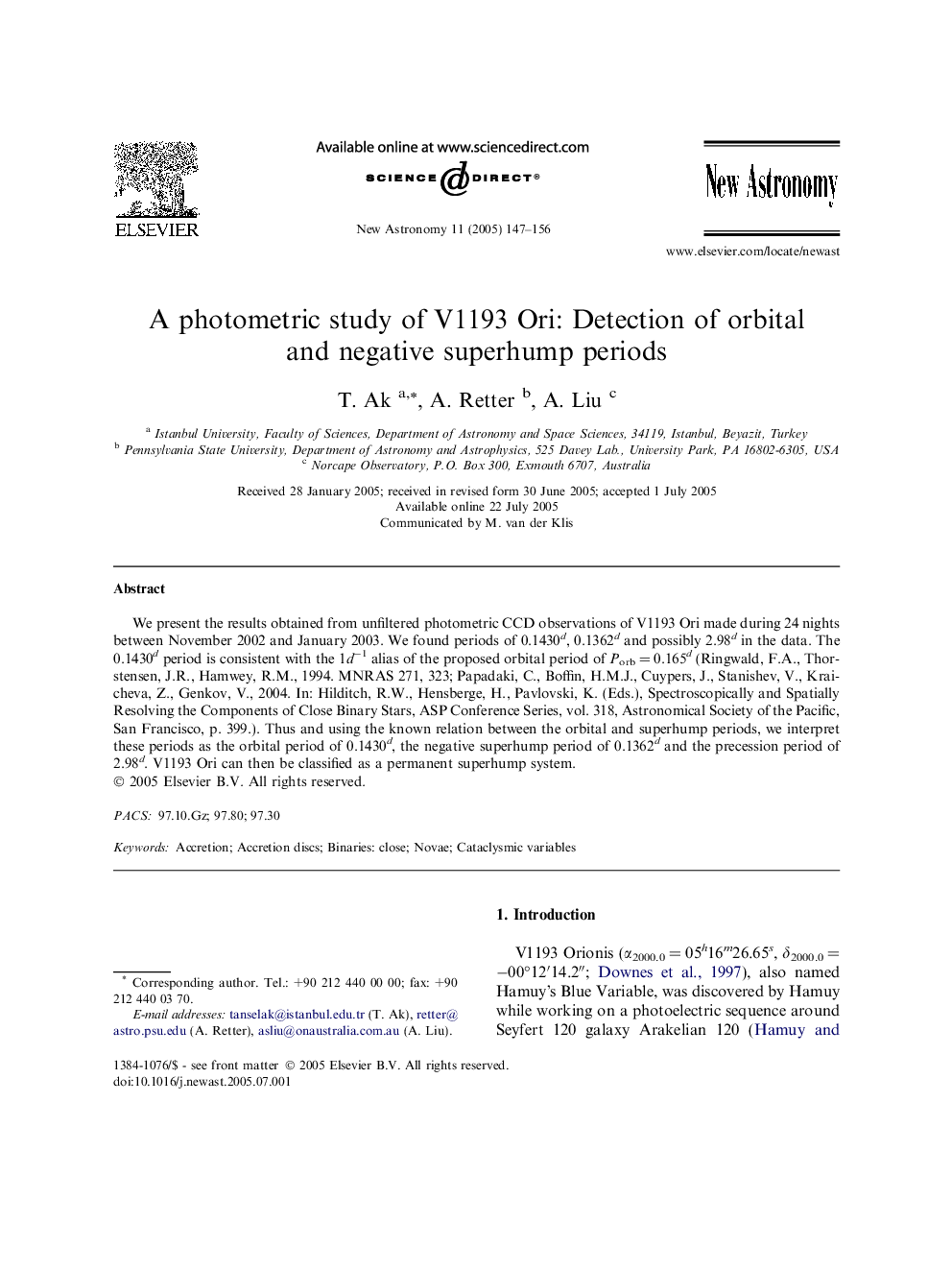| Article ID | Journal | Published Year | Pages | File Type |
|---|---|---|---|---|
| 10704693 | New Astronomy | 2005 | 10 Pages |
Abstract
We present the results obtained from unfiltered photometric CCD observations of V1193 Ori made during 24 nights between November 2002 and January 2003. We found periods of 0.1430d, 0.1362d and possibly 2.98d in the data. The 0.1430d period is consistent with the 1dâ1 alias of the proposed orbital period of Porb = 0.165d (Ringwald, F.A., Thorstensen, J.R., Hamwey, R.M., 1994. MNRAS 271, 323; Papadaki, C., Boffin, H.M.J., Cuypers, J., Stanishev, V., Kraicheva, Z., Genkov, V., 2004. In: Hilditch, R.W., Hensberge, H., Pavlovski, K. (Eds.), Spectroscopically and Spatially Resolving the Components of Close Binary Stars, ASP Conference Series, vol. 318, Astronomical Society of the Pacific, San Francisco, p. 399.). Thus and using the known relation between the orbital and superhump periods, we interpret these periods as the orbital period of 0.1430d, the negative superhump period of 0.1362d and the precession period of 2.98d. V1193 Ori can then be classified as a permanent superhump system.
Related Topics
Physical Sciences and Engineering
Physics and Astronomy
Astronomy and Astrophysics
Authors
T. Ak, A. Retter, A. Liu,
